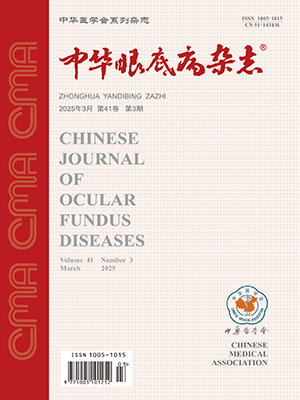Objective To explore the ocular clinical features in patients with cranial venous sinus thrombosis (CVST). Methods The clinical data from 118 inpatients with CVST diagnosed by digital subtraction angiography (DSA).The patients included 53 males and 65 females with the sexual rate of1 :1.2. The initial onset age of the patients ranged from 15 to 67; 20-45 are the most common onset ages, and 30-40 reached the peak. The CVST patients were divided into 3 groups a c cording to the onset styles, including acute onset (within 2 days), subacute ons et (2 days to 1 month), and chronic onset (more than 1 month). The features of o cular and systemic manifestations was analyzed. A total of 58 out of 118 patient s with CVST were followed up for about 1 year after the diagnosis and treatment. Results Among the 118 patients with CVST, 25 (21.2%) had the ocular symptoms as the initial onset, 36 (305%) had ocular syndrome with other symptoms, and 57 (48.3%) had non ocular symptoms. There was no statistical significance among each group. The most common chief complains were the blurred and decreased vision (in 61 eyes, occupying 85.9% of all the chief complains). The most common symptom was papilloedema (in 57 eyes, accounting for 48.3% of all the patients with CVST). In 58 follow-up patients, 13 (22.4%) had serious visual decrease due to the optic atrophy. All the ocular manifestations related to the intracranial hyper tension caused by CVST. Conclusions In patients with CVST, 1/3 have ocular symptoms, and 1/5 have ocular symptoms as the initial manifestation. Visual decrease and papilloedema are the common symptoms in patients with CVST. We should especially advert to the patients with intracranial hypertension with unknown origins. (Chin J Ocul Fundus,dis,2006,22:373-375)
Citation: WANG Dajiang,FANG Boyan,WEI Shihui. Analysis of clinical features of the eyes with thrombosis in cranial venous sinus. Chinese Journal of Ocular Fundus Diseases, 2006, 22(6): 373-375. doi: Copy
Copyright © the editorial department of Chinese Journal of Ocular Fundus Diseases of West China Medical Publisher. All rights reserved




